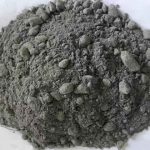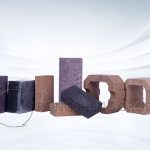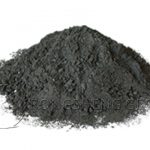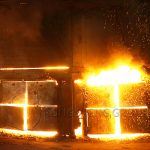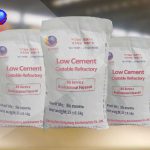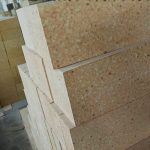Unshaped refractory materials account for an increasing proportion of the entire industry. Rongsheng Refractory Materials Manufacturer, an environmentally friendly and fully automatic unshaped refractory material production line, specializes in providing unshaped refractory material products for high-temperature industrial furnaces. Refractory materials include various types of refractory castables, refractory plastics, silicon carbide wear-resistant refractory castables, refractory ramming materials, etc. Our professional technical team can customize refractory lining material solutions based on the actual working conditions of high-temperature furnaces. And we can also customize refractory precast shapes according to actual working conditions.
In the formulas of unshaped refractory materials refractory castables, refractory spray coatings, refractory plastics, etc., in addition to refractory aggregates and binders. There is another material that is also very critical, namely refractory cement. Among them, the commonly used refractory cement is also called aluminate cement and high alumina cement.
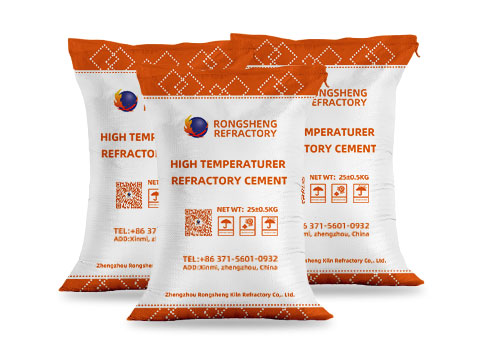
Aluminate Cement Refractory Cement
Aluminate cement is divided into calcium aluminate cement, barium aluminate cement and barium zirconium aluminate cement. As a binder or admixture for amorphous refractory materials, calcium aluminate cement is widely used. Calcium aluminate cement is a hydraulic cementitious material made by grinding the hot material of calcium aluminate cement produced by the sintering or melting method. It has the characteristics of rapid hardening, high strength, fire resistance and resistance to sulfate corrosion. Its main varieties include: CA-50 cement, CA-60 cement, CA-70 cement and CA-80 cement, etc. In addition, there are fused calcium aluminate cement and ferrous bauxite cement. The chemical composition of alumina cement is Al2O3 40%-50%, CaO 36%~40%, Fe2O3 8%~17%, SiO2 3%~9%, and its main mineral components are CA, C4AF, C2AF and C4F. The cement is characterized by rapid hardening and high strength, and is suitable for use as a binder for refractory spray coatings.
The Role of Various Oxides in Calcium Aluminate Cement
The various oxides in calcium aluminate cement play the following roles in cement. Aluminum oxide and calcium oxide are decisive chemical components, with contents of 35%~82% and 20%~40% respectively. During the firing of hot cement materials, the two interact to form monocalcium aluminate (CA), monocalcium disaluminate (CaO·2Al2O3, abbreviated as CA2), and dodecacalcium heptaluminate (C12A7). At the same time, a very small amount of tricalcium aluminate (C3A) and monocalcium hexaaluminate (CaO·6Al2O3, abbreviated CA6) may also be generated.
In aluminate cement, CA and CA2 are the main mineral components. CA has high hydraulic activity, hardens quickly, and is an important mineral component for the early strength of cement. CA2 hydrates and hardens slowly, has low early strength and high late strength. C12A7 has less mineral content. It has quick-setting properties and can adjust the cement setting time or prepare early-strength and fast-hardening cement. The mineral content of C3A and CA6 is very small and can be ignored. Calcium aluminate minerals have a high melting point and can increase the service temperature of amorphous refractory materials.
Silica is a harmful impurity in aluminate cement. It reacts with CaO and Al2O3 to generate minerals such as dicalcium silicate (2CaO·SiO2, abbreviated as C2S) or aluminite (2CaO·Al2O3·SiO2, abbreviated as C2AS). C2S is a gelling substance that hardens very slowly, and C2AS is a substance that has no water hardness and melts easily at high temperatures. This means that silicon oxide not only consumes useful Al2O3 and CaO, but also forms harmful substances. Therefore, its content should generally be no more than 7% and should be as low as possible; iron oxide is a flux. It interacts with CaO and Al2O3 to form C2F or C4AF with very weak gelling properties, reducing the active ingredients in the cement and reducing the strength. Therefore, its content is limited to less than 2.5%. C4AF minerals have certain early strength properties. When formulating iron clay cement, the iron oxide content can be relaxed to about 17% in order to obtain more C4AF.
Magnesium oxide can react with Al2O3 in aluminate cement to form magnesia-aluminum spinel (MgO Al2O3, abbreviated MA). Although it has no hydraulic hardness, it has a high melting point and strong slag resistance, which is beneficial to the preparation of monolithic refractory materials. The content of titanium oxide is small, and it reacts with CaO to form perovskite (CaO·TiO2 abbreviation CT), which does not greatly hinder the performance of cement and promotes the crystallization of calcium aluminate minerals. In addition, there are oxides such as K2O and Na2O in aluminate cement, which are harmful impurities and their content should be reduced as much as possible.
Aluminate cement is a good binder or admixture for unshaped refractory materials, and it is also relatively commonly used.
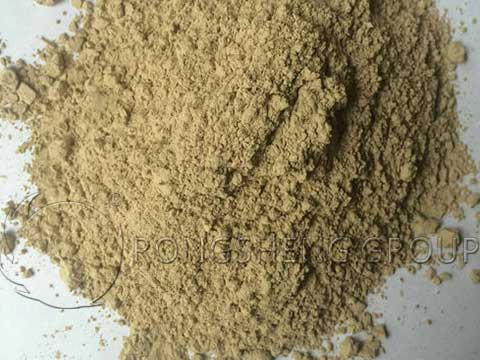
Types of Refractory Cement
Refractory cement can be divided into aluminate refractory cement, low calcium aluminate refractory cement, calcium magnesium aluminate cement and dolomite refractory cement according to different ingredients.
- Aluminate refractory cement
Aluminate refractory cement is generally a refractory cement made by mixing and grinding 4 parts (by mass) of low calcium aluminate refractory cement clinker and 1 part of high alumina cement clinker. Compared with low calcium aluminate refractory cement, it has higher early strength, similar refractoriness and the same use.
- Low calcium aluminate refractory cement
Low-calcium aluminate refractory cement is aluminate cement made from high-quality bauxite and limestone in an appropriate proportion, sintering and grinding. Its composition is usually: 70% oxygen, 19% to 23% calcium oxide, <4% silicon dioxide, and <1.5% iron oxide. The mineral composition is mainly calcium disaluminate, accounting for 60% to 70%, and the refractoriness is above 1650°C.
Compared with high alumina cement, the main differences are. It has high alumina content, low calcium oxide content, low early strength, and high refractoriness. It can be formulated with refractory aggregates (such as calcined bauxite, high alumina brick fragments, etc.) with a refractory temperature of 1770°C or above to form refractory concrete or refractory mortar, which can be used for the lining of cement rotary kilns and other industrial kilns.
- Calcium magnesium aluminate cement
Calcium-magnesium aluminate cement is mainly aluminate cement made from high-quality bauxite and dolomite in an appropriate proportion, sintering and grinding. The composition of calcium magnesium aluminate cement is usually: alumina accounts for 66% to 74%, calcium oxide accounts for 13% to 18%, and magnesium oxide accounts for 10% to 13%. Trace amounts of silicon dioxide and iron oxide. The mineral components are calcium aluminate and calcium disaluminate accounting for 45% to 60%, and spinel accounting for 35% to 50%. The refractoriness is above 1650℃.
What are the requirements for the setting time of aluminate cement? The initial setting time of CA-60 cement shall not be earlier than 60 minutes, and that of other grades shall not be earlier than 30 minutes. In terms of final setting time, the final setting time of CA-60 shall not be later than 18 hours, and that of other brands shall not be later than 6 hours.
Regarding cement grades, what does the 625 we often say stand for? I often hear customers asking how much does 625 cement cost per ton? So what does this 625 represent? In fact, these are all labels for the 3D strength of cement.
Buy high-quality unshaped refractory material products, refractory cement, high alumina cement, aluminate cement, etc. Please contact us for free samples and quotes.



